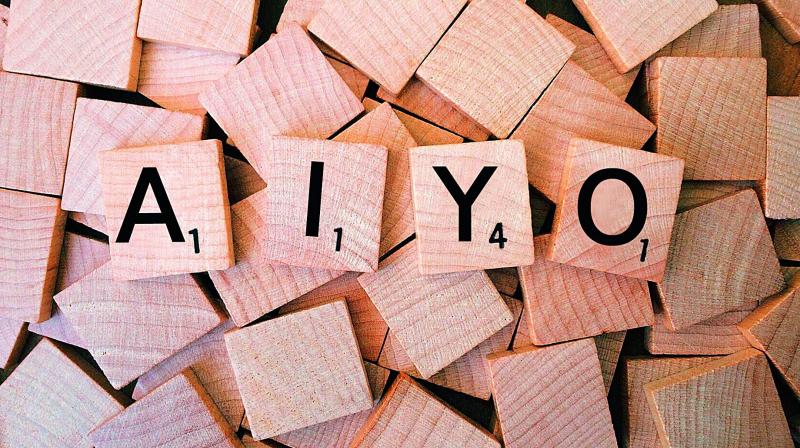Word's out: Aiyo, they have done it again
How a smash-hit Indian word made it to one of the world's oldest English dictionaries.

South Indians in particular and Indians in general must be celebrating the fact that ‘Aiyo’ has finally made it to the the Oxford English Dictionary. Indeed, it surprises everyone who follows the OED and many are wondering why it took the word so long to be included in the English language. The official website of OED says ‘Aiyo’ was first cited in 1886 in the Chamber’s Journal and later references were attributed to the great Indian-English writer R.K. Narayan (“Aiyo! Never thought our beloved headmaster would come to this end.” [Tiger for Malgudi, 1984]). But this should not stun those in love with the language. For several years now, many words of Indian origin — from Juggernaut and Challan to Chakra and pyjama — have been making it to the ranks thanks to an elaborate interplay between the British Raj and the multiversal vocabulary of the Indian languages. What is fascinating to us is the fact that this is one of the rare instances where an exclamation is making it after so many years since first citation, whereas not many words from Indian languages, including Hindi, have made it to the final cut — remember Arey or Orey?
Also, not many living languages in the world today have the ‘acceptance elasticity’ of English to embrace words, even if the process takes time. The French may have the Academe Francais and other languages may have their official bodies to create a reference for lexicography but English is divided by many inner and outer rings of expanding reach — from the Atlantic to the Commonwealth to the Asian regions and beyond.
And since the publication of the first comprehensive dictionary by Samuel Johnson in 1755, we have seen many rivalries to have the last word on English dictionary from the Marriam-Webster to Collins to Chambers to Cambridge to Macmillan and the American Heritage.
But the OED takes an eminent position when it comes to inclusions of new English words. Unlike most other English language dictionaries which became “citation referencing works”, the OED has positioned itself as a vast repository of words that have been in vogue for the last 1,000 years. Its latest edition comprises about 6,00,000 words whereas the average dictionary that an English-speaking adult uses in India has an outdated version of the dictionary probably born in the 80s or the 90s having about 65,000 words. Besides being an inventory of English words and a progressive lexicography, the OED has also created an online corpus of ten billion words (which are referenced by first use, full meaning etc.). Ten billion words practically includes most of the vocabulary built into modern world languages — a giant leap from the twenty million words corpus way back in 1987.
What makes the OED’s work different and authoritative vis-a-vis other dictionaries purveying the boundaries of English language is that of all the categories of these words housed in the corpus, only 24 per cent come from the news sources. Categories from medicine (3.7 per cent), business (3.9 per cent), science (5.6 per cent) to unclassified (17.1 per cent) make the tracing of etymological origins of the words selected, exciting. Even blogs account for 8.2 per cent of selections as per the OED which perhaps may have played a crucial role in zeroing in on words such as “Aiyo” and YOLO to be counted as part of the English language. One thing is sure: as English shows suppleness in including such words used in the intimacies of the vernacular, there may be many such four-letter words which may not be viewed as such by future writers and speakers of English.
The new status of “Aiyo” would certainly have made the late R.K. Narayan proud of his heritage.

